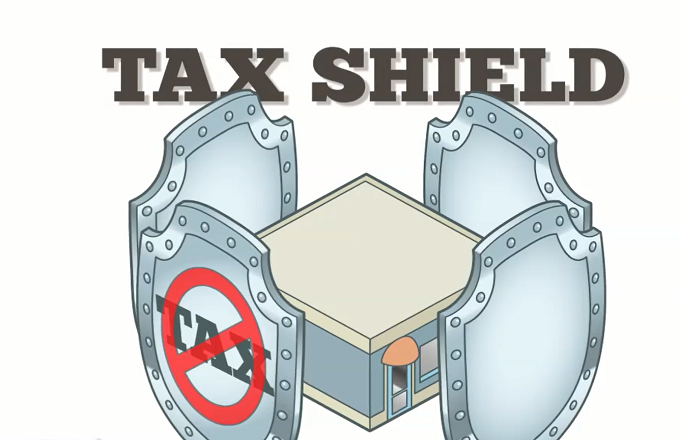
The higher the savings from the tax shield, the higher the company’s cash profit. The extent of tax shield varies from nation to nation, and their benefits also vary based on the overall tax rate. A tax shield on depreciation is the proper management of assets for saving the tax. A depreciation tax shield is a tax reduction technique under which depreciation expenses are subtracted from taxable income. For example, because interest payments on certain debts are a tax-deductible expense, taking on qualifying debts can act as tax shields.
Tax Shields for Medical Expenses
The value for the tax shield approach also depends on the corporation or individual effective tax rate. Also, there can be cases when the current year’s income can be reduced than the previous year due to unclaimed tax losses of the preceding year. Over the ten-year period, the cumulative tax savings would amount to $15,000 ($1,500 annual tax savings multiplied by ten years). This means the business would have saved $15,000 in taxes due to the depreciation tax shield. Let’s consider a practical example to see how a tax shield works in real life. Imagine a small business that invests in machinery for production purposes.
Purchase Price Allocation in 4 Steps – The Ultimate Guide (
- Implementing an effective tax shield strategy can help increase the total value of a business since it lowers tax liability.
- These deductions reduce a taxpayer’s taxable income for a given year or defer income taxes into future years.
- There are many examples of a tax shield, and it often depends on the tax rate of the corporation or individual as well as their tax-deductible expenses.
This is also termed as an interest tax shield approach which will be studied in brief later. The tax savings are calculated as the amount of interest multiplied by the tax rate. Anyone planning to use the depreciation tax shield should consider the use of accelerated depreciation. This approach allows the taxpayer to recognize a larger amount of depreciation as taxable expense during the first few years of the bigger, better college tax credit life of a fixed asset, and less depreciation later in its life. By using accelerated depreciation, a taxpayer can defer the recognition of taxable income until later years, thereby deferring the payment of income taxes to the government. The tax shield is a very important aspect of corporate accounting since it is the amount a company can save on income tax payments by using various deductible expenses.
Tax Shields As Incentives
A tax shield is an item that decreases your taxable income, like depreciation expense. Wesaid earlier our depreciation expense is $10,000, and let’s say that our tax rate is 30%. Because depreciation expense decreases taxable income by $10,000, it decreases the amountof taxes we have to pay by $3,000.
LTM Revenue (and EBITDA) in 3 Steps – The Ultimate Guide (
There are a variety of deductions that can shield a company (or Individual) from paying Taxes. This article is not intended to provide tax, legal, or investment advice, and BooksTime does not provide any services in these areas. This material has been prepared for informational purposes only, and should not be relied upon for tax, legal, or investment purposes.

Navigating Crypto Frontiers: Understanding Market Capitalization as the North Star
Under U.S. GAAP, depreciation reduces the book value of a company’s property, plant, and equipment (PP&E) over its estimated useful life. Implementing an effective tax shield strategy can help increase the total value of a business since it lowers tax liability. Finally, we conclude on account of the above-stated cases that a tax shield can be utilized as a valuable option for effectively evaluating cash flow, financing, etc., activities. A 25 % depreciation for plant and machinery is available on accelerated depreciation basis as Income tax exemption.
By taking advantage of legitimate deductions, tax credits, and depreciation allowances, businesses and individuals can minimize their tax liability and retain more of their hard-earned income. It’s important to consult with a tax professional or financial advisor to understand the specific tax provisions applicable to your situation and optimize the use of tax shields effectively. By doing so, you can make informed financial decisions and potentially better secure your financial future. A tax shield will allow a taxpayer to reduce their taxable income or defer their income taxes to a time in the future.
Another option is to acquire the asset on a lease rental of $ 25,000 per annum payable at the end of each year for 10 years. With the two methods clarified, let’s look at the Cash Flow impact of each approach. Also, at higher tax rates, Depreciation is going to provide additional savings. The interest tax shield is positive when the EBIT is greater than the payment of interest. Moreover, this must be noted that interest tax shield value is the present value of all the interest tax shield.
This will again partly offset the income saved from previous tax reductions. This amount in the profit and loss statement brings down the total revenue earned by the business, thus successfully leading to lower tax payments. The concept of depreciation tax shield deals with the process in which there is a reduction in the tax amount to be paid on the income earned from the business due to depreciation. In the process, the amount of depreciation is used to reduce the income on which tax will be charged, thus bringing down the amount of tax payment. Here we see that depreciation acts as a shield against tax, a cash outflow for the business. Since adding or removing a tax shield can be significant, many companies consider this when exploring an optimal capital structure.
